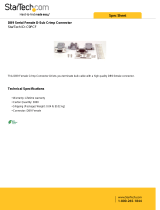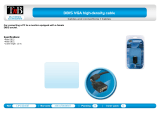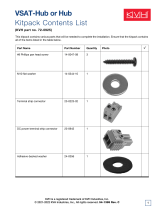2.4.2 Connecting the Antenna to
Vehicle Power
The power cable now enters the baseplate through the first liquid-tight
fitting (cable port #2). Interior baseplate wiring is unchanged.
Connecting to Vehicle Power
TracVision SA must be connected to a +12 volt DC,
2.5-3.5 amp power supply to operate. The supplied power cable
should be run up to the antenna unit, through the first liquid-
tight fitting (#2) as pictured in Figure 2-14, and wired to the
terminal connector strip as illustrated in Figure 2-20.
2.4.4 Connecting the Antenna RF Signal
Cable to the IRD
You no longer need to insert RF cables into the baseplate; they now
simply connect to the exterior baseplate connectors.
The RF signal cable is fitted with an F-type connector at only one
end and should be attached to TracVision SA and the IRD as
follows:
1. For a single IRD installation, connect the
F-connector end of the RF signal cable to the
Antenna Unit baseplate connector labeled RF1 (see
Figure 2-14). Once the cable is securely connected,
loosen the sealing nut at the base of the RF1
connector and tighten it onto the end of the RF
cable.
2. Feed the bare end of the RF signal cable through
the cable access hole and into the vehicle.
3. Attach the provided F-connector to the end of the
RF signal cable inside the vehicle as illustrated in
Figure 2-23a-d, using an Augat Snap ‘n Seal
Crimp/Strip tool to lock the connector on the
cable.
A. Slide compression fitting onto raw cable
before beginning connector termination.
4
When shipped from the factory, the
antenna’s RF connectors are
protected with caps. Leave the cap
installed on the RF2 connector
unless you are going to connect a
second RF cable to the
TracVision SA.
Figure 2-23a-d
Attaching the KVH-provided
F-connector to an RF Cable



























